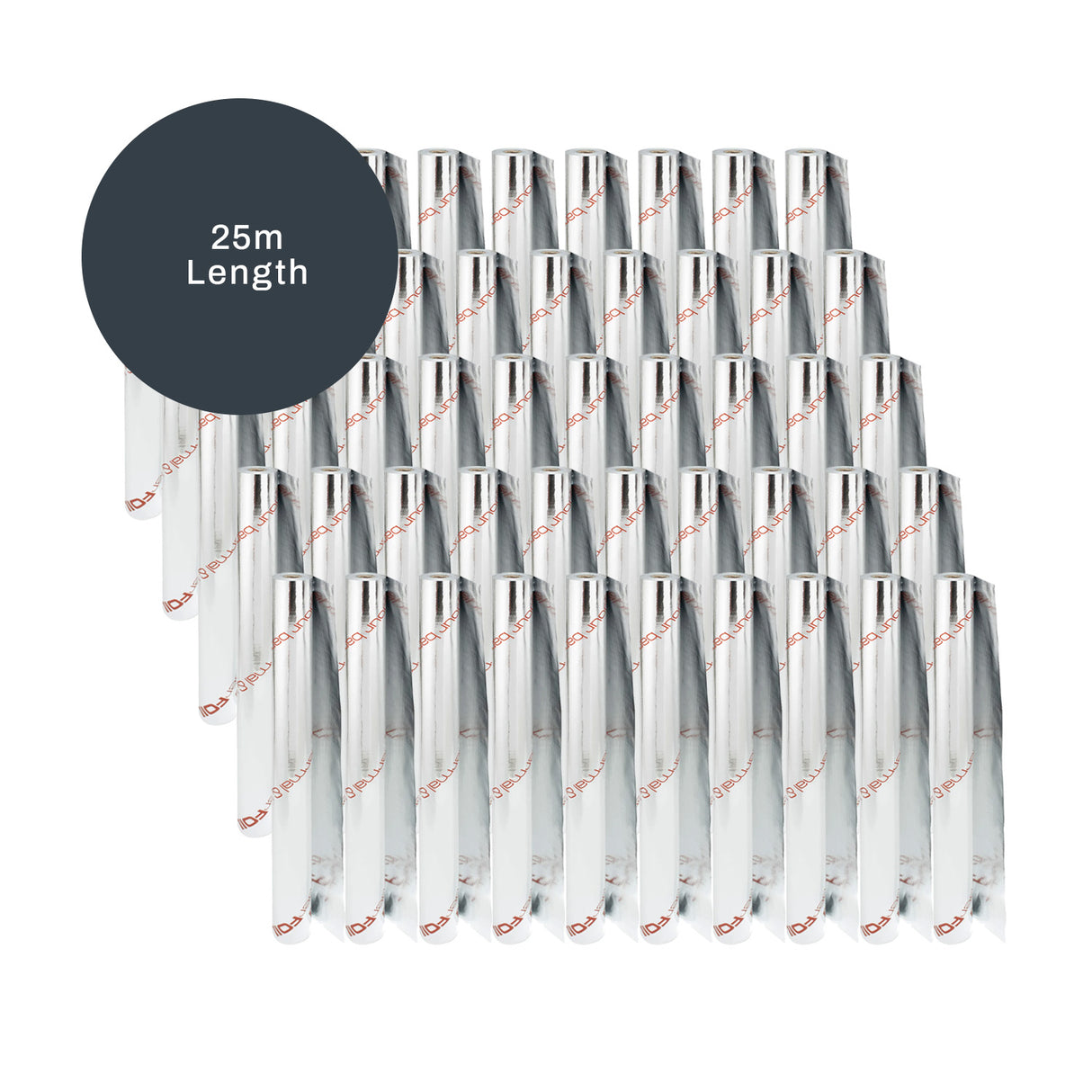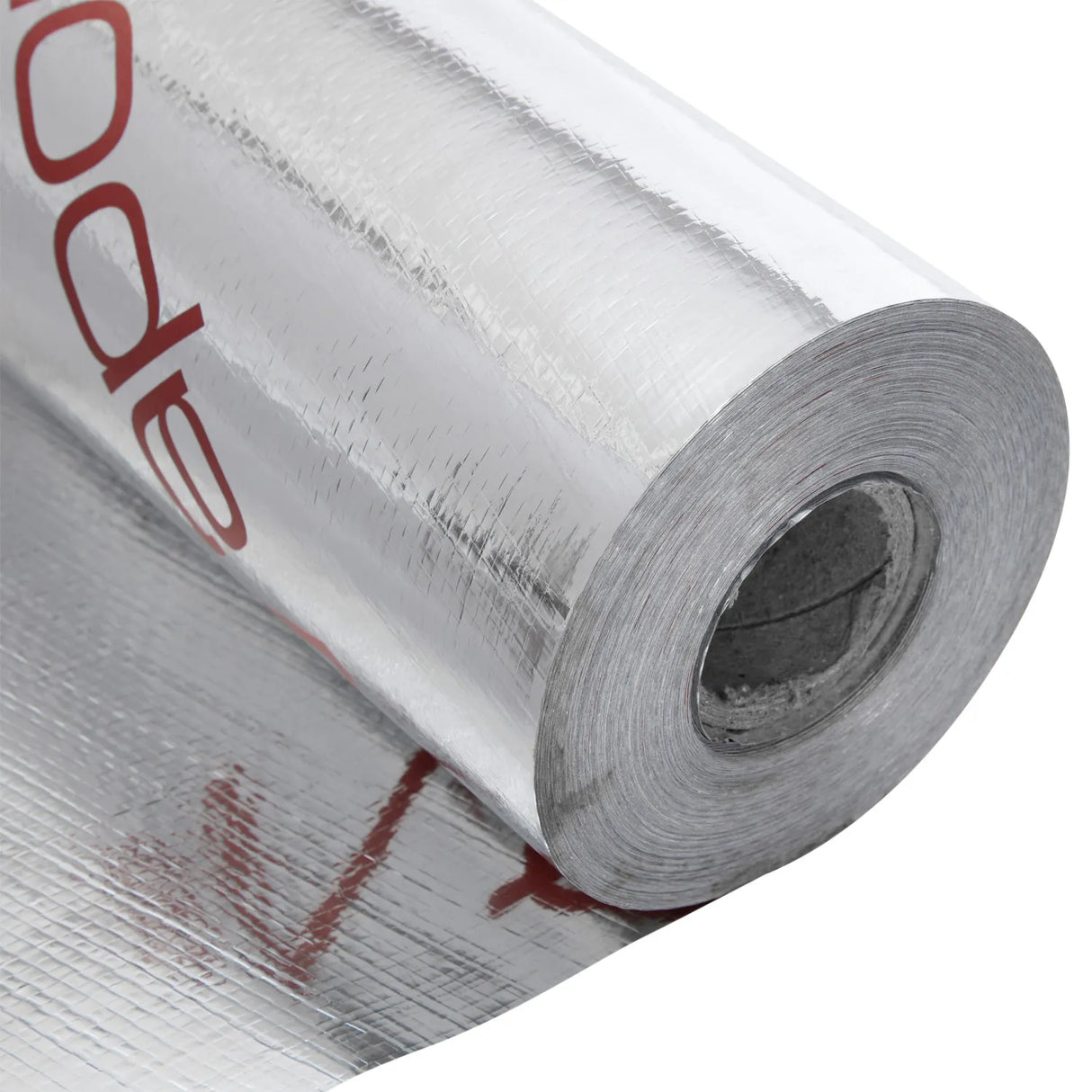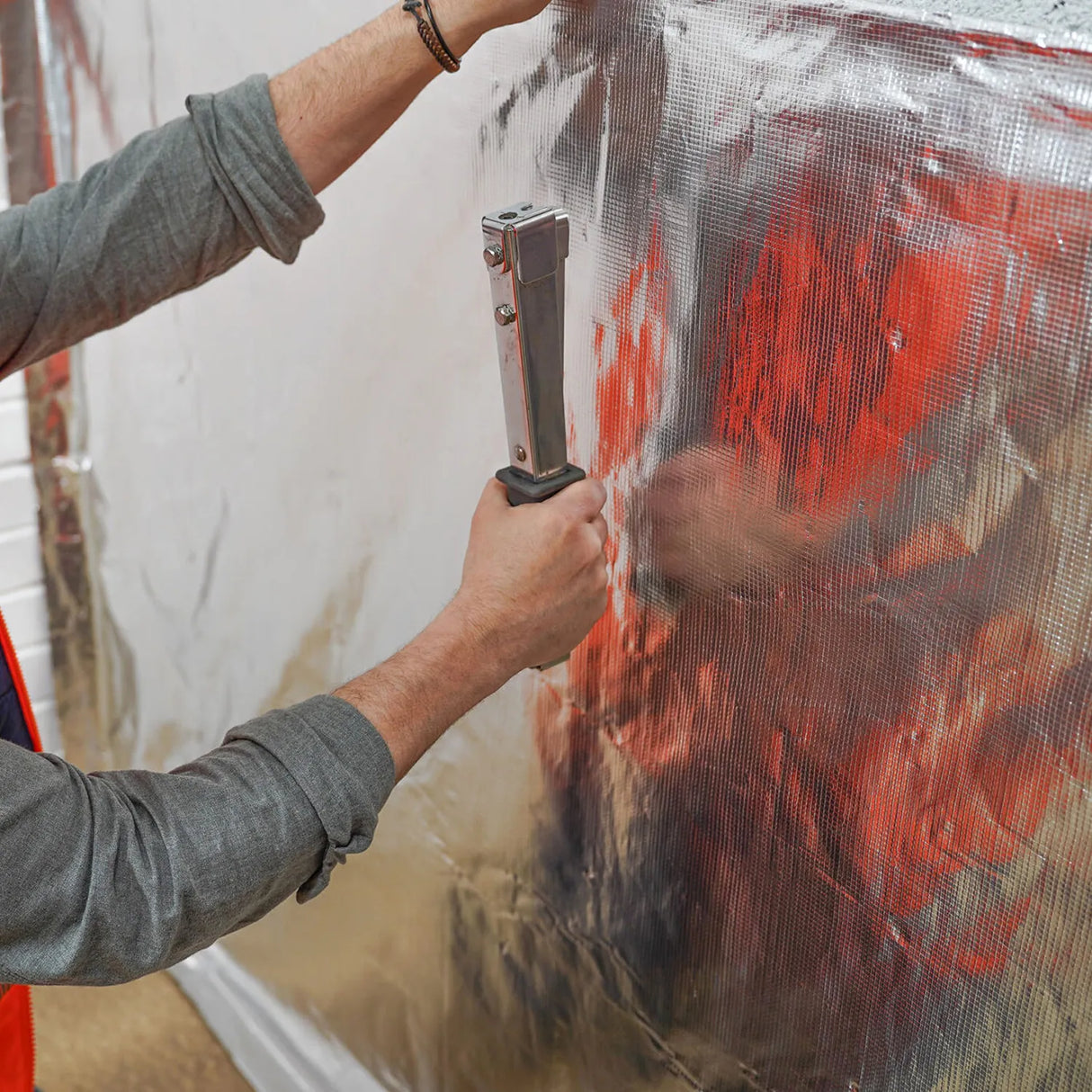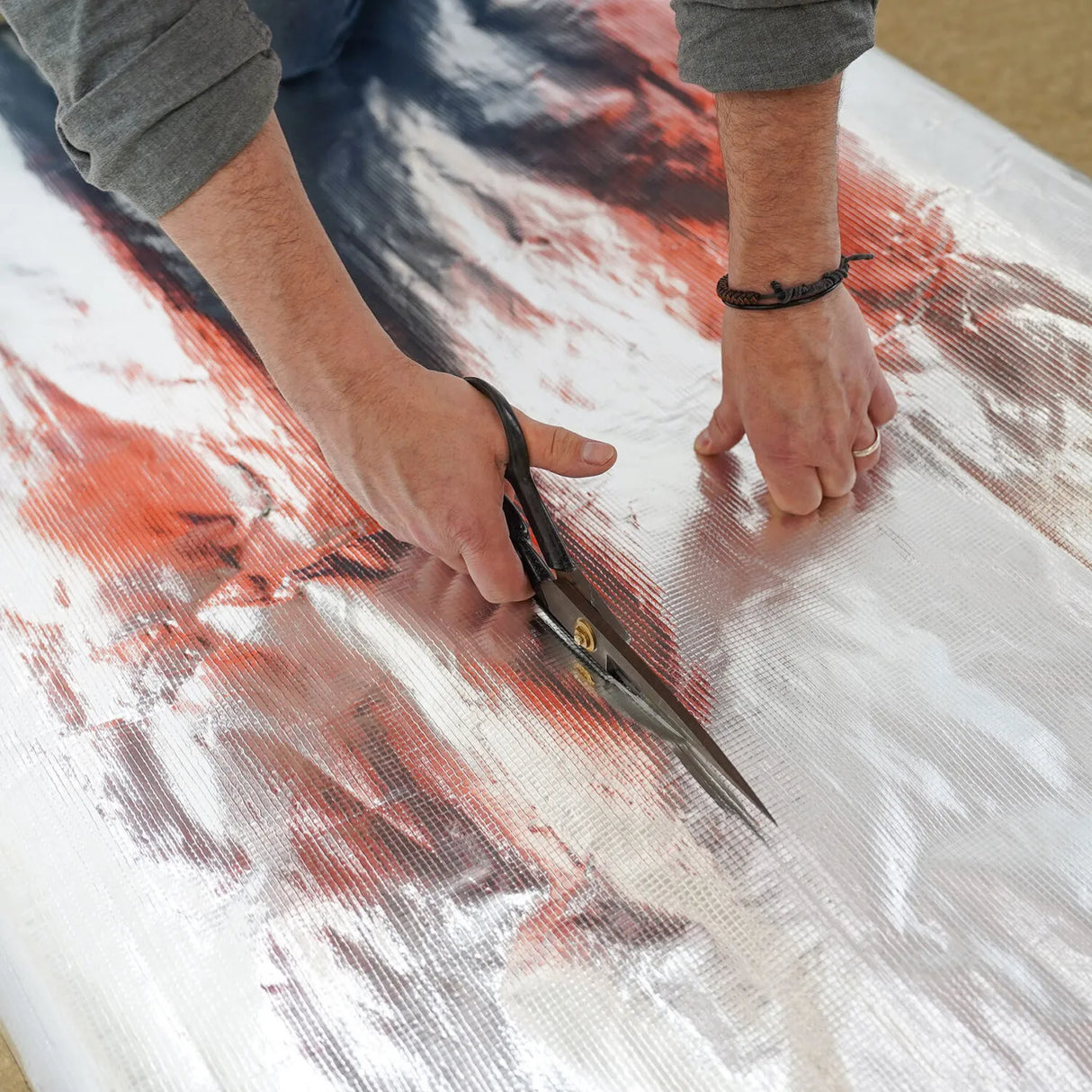SuperFOIL SFTV Thermal Vapour Barrier (VCL) - 1.5m x 25m - 50 Pack (1875m²)
SuperFOIL SFTV Thermal Vapour Barrier (VCL) - 1.5m x 25m - 50 Pack (1875m²) is backordered and will ship as soon as it is back in stock.
For large projects, choose a 50-roll pallet of our SuperFOIL SFTV - ideal for large renovations or new builds. A 2-in-1 Vapour Control Layer (VCL) and Radiant Barrier, the SuperFOIL SFTV is a Vapour Control Layer with a reflective finish that is designed to insulate heat from inside your property, and minimise overheating in warmer months as well as providing a barrier that reduces the transfer of moisture within the wall structure.
Typically used on the “warm” (interior) side in wall structures, with an airtight seal.
- Achieves an R Value of 0.95 in Roofs, 1.42 in Walls and 2.80 in Floors
- Ideal for New Builds, Extensions and retrofits
- Simple installation with basic tools and supplies
- Functions as both a VCL and Radiant Barrier
What is a Vapour Control Layer (VCL)?
A vapour control layer (VCL), also known as a vapour barrier, is a material used in building construction to prevent the passage of water vapour through walls, ceilings, floors, or roofs. It is typically installed on the “warm” side of the insulation (typically the interior side) where it helps to control moisture levels within the building envelope. By blocking the movement of water vapour, a VCL helps to prevent condensation from occurring within the building structure, which can lead to issues such as mould growth, rot, and reduced insulation effectiveness.
What is a Radiant Barrier?
A radiant barrier is a type of material designed to reduce radiant heat transfer. Radiant barriers work by reflecting radiant heat away from the surface they cover, which helps to keep spaces cooler in the summer and warmer in the winter. They are often installed in attics, under roofs, or in walls where they can block the transfer of radiant heat from the sun or from indoor heating systems. By minimising radiant heat transfer, radiant barriers can help improve energy efficiency and increase comfort levels within buildings.
How to install SuperFOIL SFTV?
A vapour control layer should be applied on the interior side of any wall, roof or flooring, over timber studs before the internal lining. It should be 100% sealed to the structure with double-sided butyl tapes, pre-applied to all areas where a fixing is to be made, and finished with metallised tapes to ensure a complete vapour seal.
Technical Documents
-
Size
-
Coverage (m²)
-
Thickness
-
Length25m
-
Width1.5m
-
Material
-
Finish
-
Estimated Lifespan
-
Thermal Resistance
-
Water Resistance
-
Reaction to Fire
Large Order or Specific Requirement?
CALL OUR TEAM
0115 6976 800














